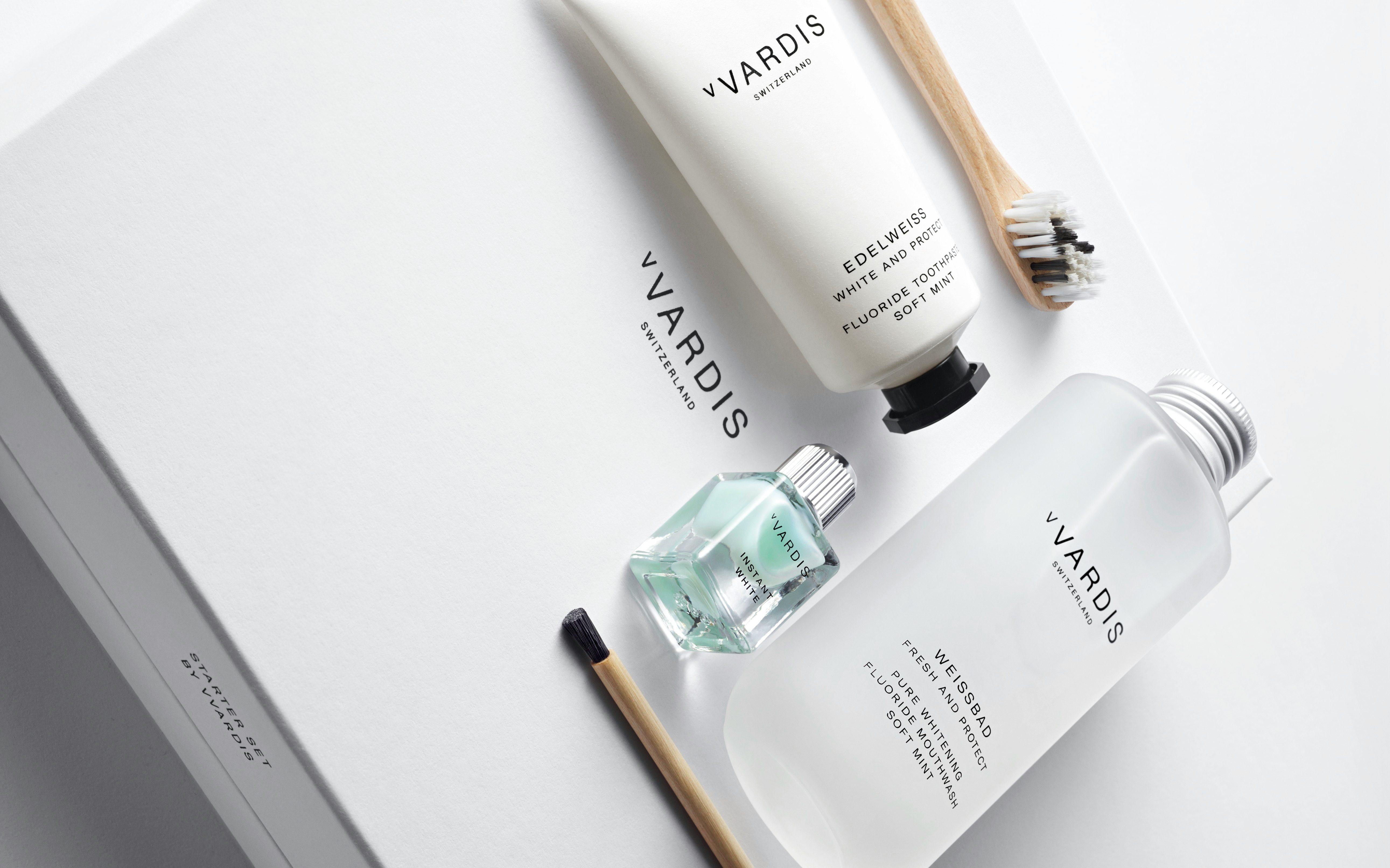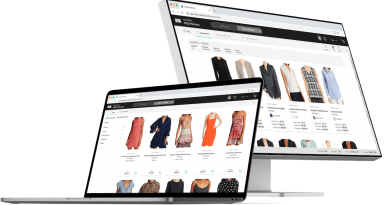Brands Sink Their Teeth Into Oral Care | BoF Professional, The Business of Beauty, News & Analysis
Shoppers perusing lipsticks and exfoliating moisturisers in Ulta might be surprised by a new product from an unlikely source: toothpaste from Colgate.
Last month, the consumer products giant debuted Co., a line of “oral beauty” products that include foaming mouthwash and a rose gold electric toothbrush that comes with a chic leather case. The products are marketed with shiny silver packaging and sparkly purple letters, seemingly designed to be Tiktok bait.
Co. was developed with Gen-Z in mind, said Dana Medema, Colgate’s vice president and general manager.
“What we kept hearing from Gen-Z was … brushing their teeth is like doing taxes,” she said. “They want new products that they are excited to touch and feel.”
That Colgate — a 150-year-old brand that sells no-frills toothpaste and toothbrushes in red, white and blue packaging — felt the need to chase Gen-Z at all is a sign of where the oral care market is heading. A wave of start-ups is trying to disrupt a category that occupies a big share of consumers’ personal grooming budgets. Aside from the subscription toothbrush Quip, oral care has mostly resisted modern, direct-to-consumer branding.
Better & Better launched in October with $20 toothpaste that’s mixed with vitamins and minerals and comes in a pouch that founder Vladimir Vukicevic said uses less plastic to manufacture. By Humankind in November began selling $15 toothpaste tablets that come in minimalist glass jars; the pills are crushed by teeth and then turn into paste. Co-founder Josh Goodman said the concept is to eliminate single-use plastic while also giving consumers an aesthetically pleasing toothpaste container. And then there’s the Swiss-based brand Vvardis, which also launched in November and makes $40 wooden toothbrushes and a $250 whitening gel in packaging that resembles luxury perfume.
Toothpaste from the startup By Humankind comes in tablet form, and with reusable jars. By Humankind.
These brands join existing oral care companies like Apa Beauty, Moon, Twice, Get Rael, Risewell and Bite, which brand themselves as sustainable, high end, or both. Experts say premium oral care is experiencing a boom. The health and wellness movement has convinced shoppers to spend more on their hygiene. It also helps that consumers have been forced to stare at themselves all day on Zoom, causing teeth to become the feature du jour to spend on.
“Teeth has become the new boob job,” said Cassandra Grey, founder of beauty website Violet Grey, which is working on an oral care line of its own. “We all have our own pocket television that we’re stars on, and so being camera-ready 24/7 is table stakes.”
Why Oral Care Is Having Its Moment
Grey said shoppers have flocked to oral care products on Violet Grey for about two years now, but Covid-19 accelerated the trend. Sales of oral care at Violet Grey jumped 33 percent this past year.
“Everyone is much more conscious of their health, especially after having spent so much time at home,” Grey said. “Dental hygiene is one category that everyone really wants an updated and developed routine in.”
Consumers in the US spent $9 billion on oral care in 2020, according to Euromonitor. CPG giants Colgate and Crest have long dominated the space with cheap toothbrushes, toothpaste and mouth rinses but analysts see a new opportunity for smaller brands. The pandemic forced shoppers online for household items, and 77 percent of shoppers who shopped for toiletries online during Covid said they’re continuing to do so, according to a March report from the Consumer Brands Association.
Dental hygiene is one category that everyone really wants an updated and developed routine in.
“The willingness to try a new product has always been a challenge for a brand that’s competing against Colgate,” said Ricardo Rubí, a partner at consulting firm Simon-Kucher. “A lot of these companies would have never stood a chance to a dominant brand, simply because of shelf space. But with Covid, a lot of people who spent more time online were willing to shop with them.”
Some start-ups are approaching the category by tackling sustainability. By Humankind’s Goodman believes this creates an advantage over incumbents like Crest and Colgate, which aren’t brands young consumers think of as eco-friendly. Graham Brown, a partner at Lerer Hippeau, which has invested in By Humankind amongst other oral care start-ups, agreed that sustainability plays a big factor.
“Five years ago, sustainability was a thing people talked about, but it didn’t drive behaviour. That’s changed substantially,” said Brown. “Single-use plastics have made up this industry for decades and shoppers are looking for something that is going to have a high positive impact on the world.”
Other oral care companies are taking the opposite approach, putting the products into expensive, high-end packaging (Vvardis’s $55 toothpaste comes in the same plastic tube that high-end hand lotions are sold in).
“Traditional oral care has been basic and a little boring and if you think about what’s become popular in the beauty landscape over the last five years, it’s products that were worth investing in,” Jessica Phillips Perez, vice president of merchandising at Ulta said about why some customers take to luxury oral care. “People care about how these items look in their bathrooms.”
Products from oral care company Vvardis come in luxury company. Vvardis.
Liz Suspanic, a brand manager at Colgate who helped create Co. said packaging was crucial for the sub-brand’s development.
“We knew the design and packaging had to have fun and flair,” said Suspanic. “This is for the Gen-Z beauty enthusiast. It needs beauty cues so that it can sit in their beauty bags and on their counter.”
The luxury end of oral care also means marketing with dentists. Vvardis founders Golnar and Haleh Abivardi are the dentists behind the international dental chain Swiss Smile. Apa Beauty, which sells what Grey describes as “the Rolls Royce of toothbrushes” is run by celebrity dentist Michael Apa. The idea is that while these products might not be all that different from drug store ones, the look and feel is.
“Customers are primarily motivated by vanity and what will make them feel good and look better,” said Grey. “They want to make sure these products are delivering on their promise.”
Competing in a Crowded Market
It won’t be easy for these new companies to compete against enormous companies like Colgate or Crest — especially with Colgate’s debuting a Gen-Z line of its own. But Aubrie Pagano, a venture capitalist with Alpaca VC, which has invested in Better & Better, believes there’s still opportunity for brands to bring new types of oral care products to the market.
This is for the Gen-Z beauty enthusiast. It needs beauty cues so that it can sit in their beauty bags and on their counter.
“There’s been a real lack of innovation in the oral care space so a new brand could add value,” she said. “I see an opportunity the same way clean beauty disrupted incumbents by talking about health and chemicals. You need to show how you will compete in this crowded category.”
Perez of Ulta also recommended companies experiment with textures when it comes to developing new products. It’s a similar strategy to how beauty brands have found success selling new products, and she pointed to Co.’s foaming mouthwash as an example.
“New experiences will help grab new customers,” Perez said. “It’s similar to what happened with skin care five years ago, where Korean beauty and gel-based textures lit up skin care. The textures really changed, and that made shoppers interested in buying new products.”
Peri Edelstein, who covers consumer products for the Boston Consulting Group, recommends developing products that make consumers feel like they are building a routine.
“There is opportunity to grow by developing all sorts of steps, similar to how skin care added serums,” Edelstein said. “There are products to develop in oral care so that the steps beyond toothbrushing feel like a ritual.
Andrew Gluck, an angel investor who advises and invests in oral care, believes brands should create oral care products as niche as possible.
“Crest can make anything you make for much cheaper and distribute it wider and faster, so you need to be playing a different game,” Gluck said. “If you can create a speciality and then develop a story that demonstrates the premium nature of the product, people will pay for it. Maybe it’s gum depletion issues or whitening, but focus on a demographic who needs a solution.”
Pagano added that oral care is a good category to explore replenishment programmes.
“It’s an easy way to juice the business,” said Pagano. “A subscription business allows you to have annuity with a customer, where you have predictable revenue and build margin profiles around that. You can assume you’ve acquired someone for six months instead of one. Replenishment is also a lower-cost [business] and you bake the margins in up front.”
Related Articles:
Prose Wants to Customise Everything in Your Bathroom
Is Scalp Care the New Skin Care?
How Digital Beauty Brands Are Making Wholesale Work






:quality(70):focal(3138x1368:3148x1378)/cloudfront-eu-central-1.images.arcpublishing.com/businessoffashion/332QPGENCJAG5AAKYKHZ5Z4BE4.jpg)
